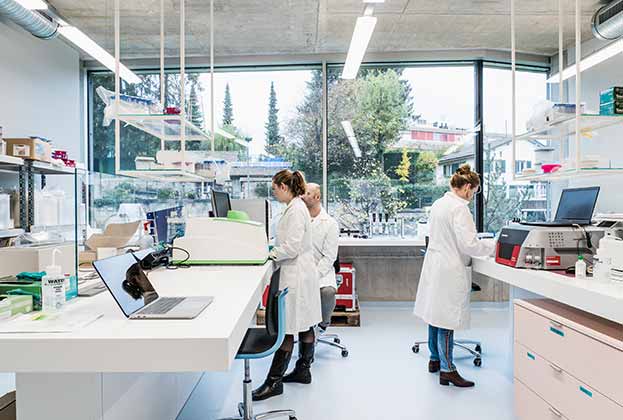Average fully fitted lab premium across the UK and Europe is 76% when compared to the office rental tone
Investors and developers have been grappling with build cost inflation across all sectors recently, with the BCIS reporting a 7.6% increase in All-in Tender Price Index (TPI) from Q4 2021 and Q4 2022. The life science sector is not immune to this trend.
Life science real estate, specifically laboratory and specialist manufacturing space, is particularly complex to develop due to the technical specification required and build costs of these facilities are typically higher than for standard offices. Given the nascent occupier market in many emerging clusters, coupled with limited opportunity for pre-lets given development timeframes and a lack of transparent market evidence, investors have encountered challenges in underwriting investments.
Savills began to track laboratory rental evidence across the golden triangle over five years ago, and we have seen a clear emergence of ’lab premiums’ in these key markets. In parallel, our continental European Life Science Databook is also evidencing such a trend. We believe these rental premiums are being driven by two fundamental factors:
- Build Costs: Simply put, life science facilities are more expensive to develop, therefore, the achieved rent must be higher than standard offices in order to provide a suitable yield on cost (YoC) for developers and investors to render a scheme viable. Similar dynamics are observed when comparing standard logistics facilities to cold storage or specialist pharma manufacturing assets; and
- Demand vs Supply Imbalance: In many of the key clusters across Europe there is a chronic undersupply of suitable real estate, leading to a demand and supply imbalance. Both large corporates and small scale-ups are increasingly looking to secure space in key clusters so they can continue to research and innovate. Delays in securing appropriate space are often a hindrance to the core business, and, as such, we have seen evidence of these businesses being less rent-sensitive when compared to other sectors.
The chart below demonstrates lab premiums throughout select European markets. Savills observes the largest lab premiums in secondary office markets such as Stevenage, where the ’Shell & Core Lab Premium’ and ’Fully Fitted Lab Premium’ is 63% and 138%, respectively. This differential is more significant than in core office markets such as Copenhagen, where the prevailing office rental tone is strong. Indeed, throughout the UK and continental Europe, Savills research demonstrates a higher rental premium in regional locations.
The average fully fitted lab premium across the UK and Europe is 76% when compared to the prevailing office rental tone. Whilst this rental premium might seem attractive in today’s market, investors and developers need to fully understand the CAPEX outlay in delivering this space and the potential absorption risk given the bespoke requirements of target occupiers.
Methodology
Savills identified leading life science and innovation clusters across the UK and Europe. Savills Research, Leasing and Occupier teams compiled evidence to assess the prevailing office market rental tone for Grade A and B office stock in proximity to these key clusters. We then analysed the rental tone for both Shell & Core Lab space and Fully Fitted lab space to determine the rental delta. Where available, Savills benchmarked the rental tone with local management organisations (including incubators, governments, universities and hospitals).
Read the articles within Spotlight: Life Sciences – Trends & Outlook below.
.jpg)





